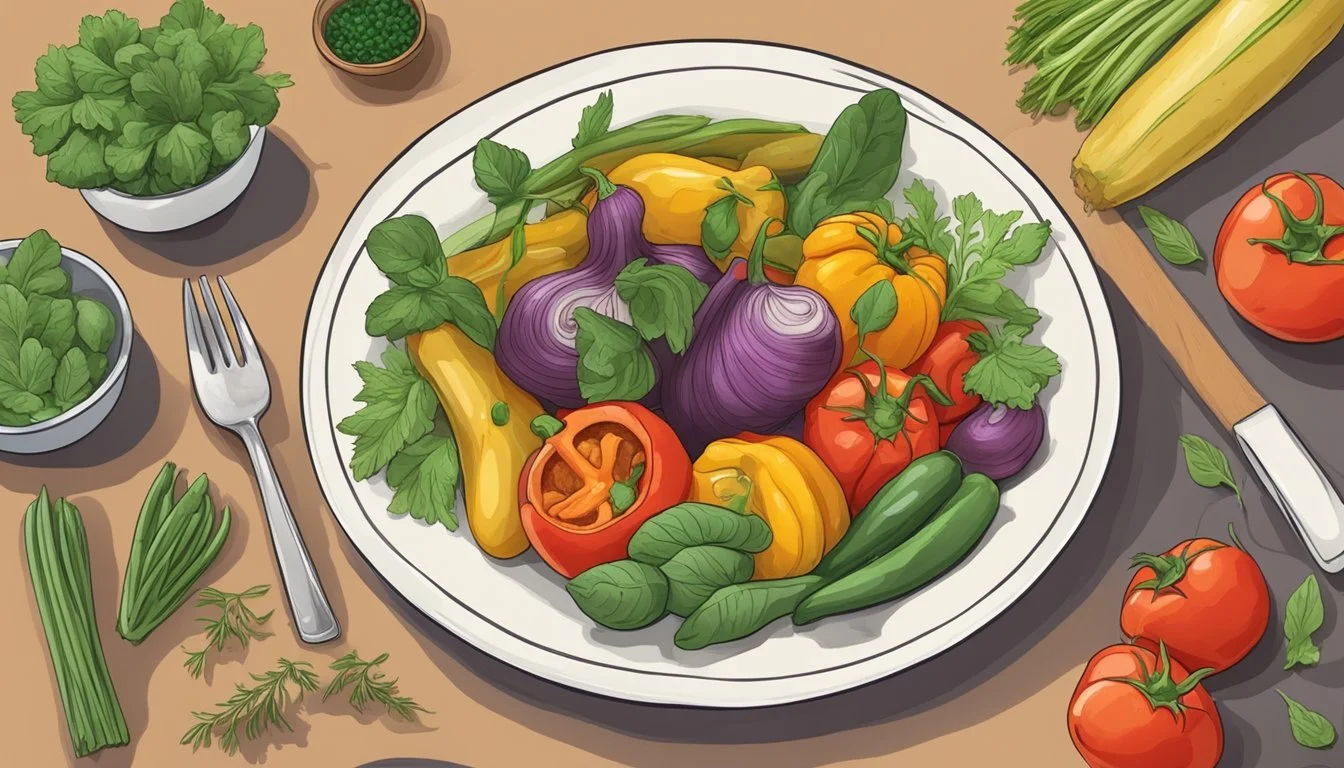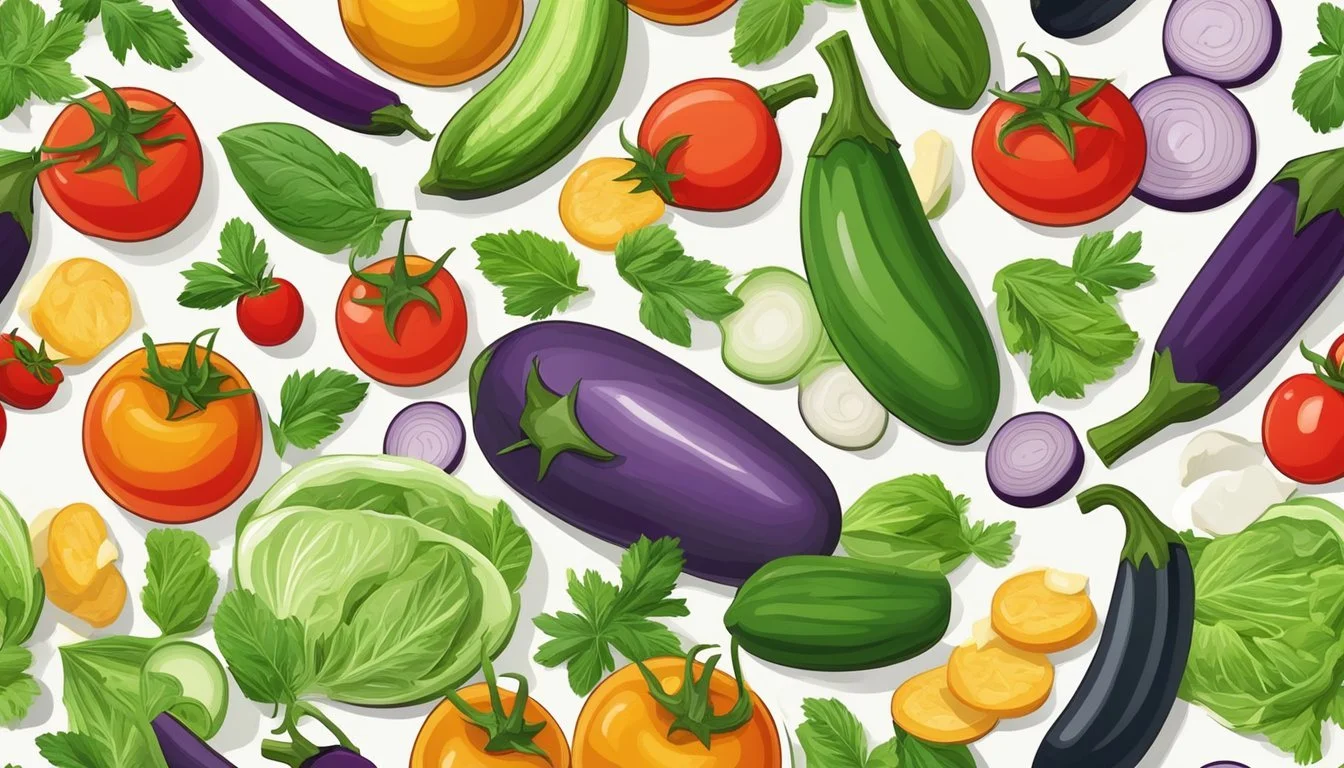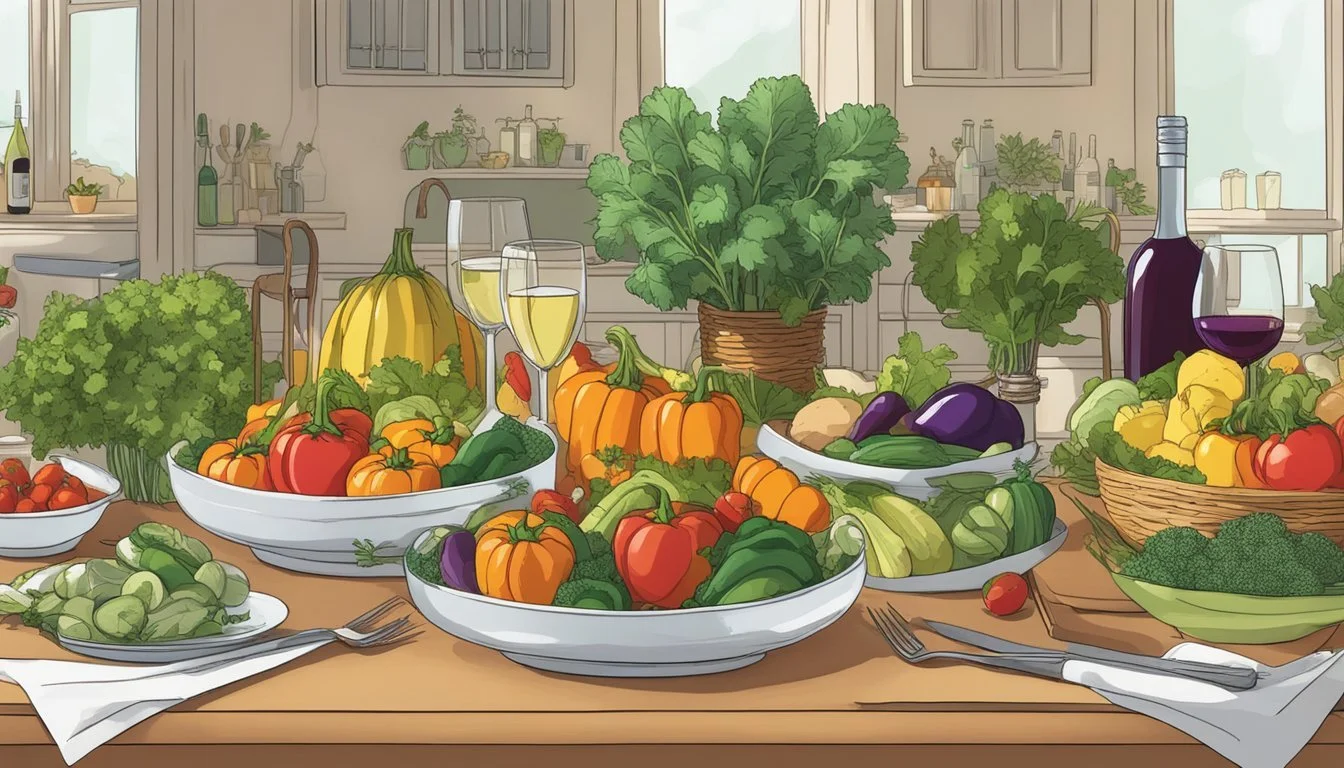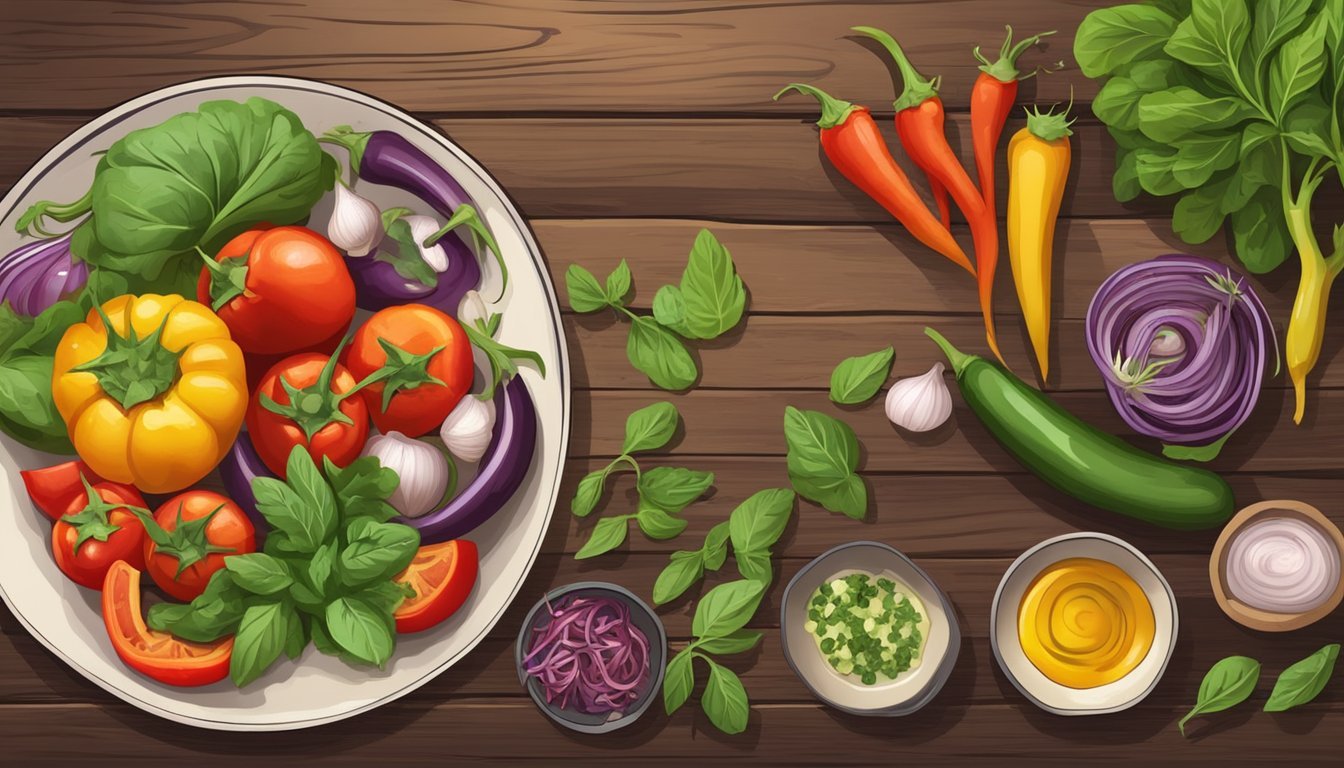Is Ratatouille Gluten-Free?
Unveiling the Facts for Dietary Needs
Ratatouille (What wine goes well with ratatouille?), a classic French dish known for its vibrant colors and robust flavors, typically comprises a variety of vegetables and herbs. At its core, the dish is a stew made from ingredients like tomatoes (What wine goes well with tomatoes?), eggplant (What wine goes well with eggplant?), zucchini (What wine goes well with zucchini?), bell peppers (What wine goes well with bell peppers?), onion, garlic, and a mix of herbs such as basil or thyme. Due to its simplicity and reliance on fresh produce, ratatouille is inherently gluten-free. This makes it a suitable option for those with celiac disease or gluten intolerance, allowing them to enjoy the rich tapestry of flavors without concern for gluten content.
Cooking methods for ratatouille vary, but most techniques involve sautéing or baking the vegetables, often layered or mixed, which further confirms the absence of gluten in the traditional recipe. When making ratatouille at home, it is crucial that all added ingredients, such as oils and spices, are also free from gluten-containing additives to maintain its gluten-free integrity. For those looking to freeze and store ratatouille, proper storage in an airtight container is essential to preserve its quality and taste.
Individuals seeking a healthy, gluten-free meal can include ratatouille in their diet with confidence, enjoying the dish's nutritional benefits and full-flavored profile. While the original recipe is gluten-free, one should always double-check the ingredients list when purchasing pre-made ratatouille or dining out, as some recipes might include gluten-containing ingredients or be subject to cross-contamination in a kitchen handling gluten products.
What Is Ratatouille?
Ratatouille is a traditional French dish known for its vibrant medley of vegetables and rich flavors, stemming from the Provence region.
Origin and Cultural Significance
Ratatouille originated from the French region of Provence and highlights the quintessence of Mediterranean cuisine. The dish has garnered cultural significance as a representation of French peasant cooking, utilizing fresh produce.
Key Ingredients
The cornerstone of ratatouille lies in its use of fresh vegetables and aromatic herbs. Typically, the dish includes:
Eggplant (What wine goes well with eggplant?): A key vegetable offering a spongy texture that absorbs flavors.
Zucchini: Adds a mild, slightly sweet flavor.
Onion: Serves as a foundational element with its savory taste.
Bell Pepper: Introduces a sweet and slightly zesty note.
Tomato: Provides acidity and moisture, crucial for the stewed preparation.
Olive Oil: Used for cooking and flavor, it's an essential fat in Mediterranean dishes.
Garlic, Basil, and other herbs: These aromatics infuse the ratatouille with their distinctive flavors and elevate the dish's overall taste profile.
Understanding Gluten-Free Diets
When exploring gluten-free diets, it's essential to consider both what the diet entails and the potential health benefits it offers, especially for those with celiac disease or gluten intolerance.
What Gluten-Free Means
Being gluten-free means avoiding all foods that contain gluten, a protein found in wheat, barley, rye, and triticale. This is not only a lifestyle choice for some but also a necessary diet for individuals with celiac disease, an autoimmune disorder where ingesting gluten damages the small intestine. Gluten-free diets can also be beneficial for people with a non-celiac gluten sensitivity or wheat allergy. For clarity, here's a simple breakdown of gluten-containing and gluten-free grains:
Contains Gluten: Wheat varieties (e.g., durum, spelt), barley, rye, triticale
Gluten-Free: Rice, corn, quinoa, oats (ensure they are labeled gluten-free to avoid cross-contamination), buckwheat, sorghum, millet, amaranth
Benefits of Gluten-Free Eating
Eating gluten-free can have several health benefits, especially for those with celiac disease, as it is the only effective treatment to manage and alleviate the symptoms associated with the condition. Nutrition plays a pivotal role in managing celiac disease, and adhering to a strict gluten-free diet can lead to significant health improvements, including:
Restoration of small intestine health
Reduction in symptoms like bloating, diarrhea, and abdominal pain
Improved nutrient absorption
While a gluten-free diet is medically necessary for some, others may choose it for its perceived health benefits. Some individuals report a feeling of increased energy and reduced inflammation when following a gluten-free diet. However, these benefits are not universal, and it's important to adopt this diet under professional guidance to ensure nutritional adequacy.
Analyzing Ratatouille's Gluten Content
Ratatouille is a traditional French stewed vegetable dish that has its roots in the Provence region. It typically features a combination of vegetables such as tomatoes, eggplant, zucchini, bell peppers, and onions. These core ingredients are all naturally gluten-free, making ratatouille a suitable option for those with gluten sensitivities or celiac disease.
Ingredient Focus:
Vegetables: Tomatoes, eggplant, zucchini, bell peppers, onions.
Herbs: Garlic, basil, herbs de Provence (optional).
When considering the gluten content, it is crucial to examine any additional elements that may be incorporated into the recipe:
Potential Gluten-Containing Additives:
Thickeners: Some recipes may use flour as a thickening agent.
Bread: Often served with baguette or croutons.
If ratatouille is being thickened with wheat flour or served with bread, it would no longer be considered gluten-free. However, it is easy to modify the recipe or accompaniments to maintain a gluten-free profile.
Modifications for Gluten-Free Ratatouille:
Thickeners: Swap wheat flour for a gluten-free alternative like cornstarch or simply allow the dish's natural juices to reduce and thicken.
Bread: Opt for gluten-free bread or omit entirely.
In closing, ratatouille without gluten-containing thickeners or bread sides remains a gluten-free dish, safe for individuals avoiding gluten. Chefs and home cooks should vigilantly ensure that all added ingredients, if any, are gluten-free to maintain the dish's gluten-free integrity.
Modifications for a Gluten-Free Ratatouille
When preparing ratatouille to be gluten-free, careful consideration is given to the ingredients and potential substitutions. This ensures that the dish remains free of gluten while preserving its traditional taste and textures.
Substitutes for Traditional Ingredients
Thickeners: Traditional ratatouille recipes rarely involve thickeners, but if one wishes to add a thicker consistency to the sauce, options such as cornstarch or a gluten-free flour blend could be utilized instead of typical wheat flour.
Accompaniments: Serving ratatouille with bread is common. Gluten-free options could include a gluten-free baguette or gluten-free garlic toast.
One must ensure that all ingredients, including any herbs and spices, are labeled gluten-free to avoid cross-contamination risks.
Gluten-Free Recipe Variations
With Polenta: Serve ratatouille over a bed of soft polenta, which is naturally gluten-free, to add a creamy texture contrast.
With Gluten-Free Pasta: Incorporating gluten-free pasta into the ratatouille allows for a heartier dish, suitable for those avoiding gluten.
Bake with a Gluten-Free Crust: For an inventive twist, top the ratatouille with a gluten-free crumble or crust and bake until crispy.
Each variation maintains the integrity of the original ratatouille recipe while providing options that are safe for individuals with gluten sensitivities or celiac disease.
Cooking Gluten-Free Ratatouille
Crafting a gluten-free ratatouille focuses on fresh ingredients and simple, traditional cooking methods. Ratatouille, a dish that celebrates the summer harvest, can be easily adapted to suit a gluten-free diet, ensuring everyone can enjoy this vibrant vegetable stew.
Preparation Techniques
One begins by selecting fresh vegetables such as eggplant, zucchini, peppers, and tomatoes, the staples of ratatouille. One must chop or slice these efficiently. Using a mandolin aids in creating uniform slices, which promotes even cooking. Prep time can vary, but with practice and organization, preparation should take approximately 15 to 20 minutes. It's always a good idea to read the recipe ahead of time to ensure that each ingredient is gluten-free, particularly with items like canned tomatoes or vegetable broths that might have additives containing gluten.
Cooking Methods
There are typically two main approaches to cooking ratatouille: baking or stewing. One should preheat the oven to 350°F (175°C) if opting to bake. For a baked ratatouille, vegetables are assembled in a pattern in a baking dish, lightly coated with oil, and then roasted until tender. It usually takes about 45-55 minutes in the oven. Alternatively, for stewing on the stove, begin by sautéing onions and garlic in olive oil until soft. Next, vegetables are added in stages, starting with those that take longer to cook like eggplant, and ending with tomatoes. This method lets each vegetable release and absorb flavors on a simmer, often completed in under 30 minutes. Whether one chooses to bake or roast, a gluten-free ratatouille should always be cooked until the vegetables are soft and the flavors melded.
Serving and Pairing Ideas
When considering serving and pairing options for ratatouille, one should focus on its gluten-free essence and the rich, vegetable-centric flavor profile of the dish. Ratatouille can be both a main course and a side dish, allowing for flexible pairing with a variety of complementary foods that maintain a gluten-free diet.
Appropriate Side Dishes
To maintain a gluten-free meal, one might select sides such as quinoa or rice that offer a starchy contrast without the introduction of gluten. These grains can be seasoned to echo the herbs used in ratatouille, providing a flavorful meld:
Quinoa: A protein-rich grain that complements the vegetable medley.
Rice: Whether brown or white, rice can be a subtle side that allows the ratatouille to shine.
In the event one considers pasta as a side, choosing gluten-free pasta is crucial to keep the dish suitable for those with gluten sensitivities.
Complementary Gluten-Free Breads
Bread pairings can elevate the ratatouille experience, and for those adhering to a gluten-free diet, there are specific options:
Gluten-Free Baguette: A crispy outer crust with a soft center to soak up the flavors.
Corn Bread: An inherently gluten-free bread that adds a sweet note to the savory dish.
For those who enjoy a crusty bread akin to a traditional baguette without the gluten, many bakeries now offer excellent gluten-free alternatives that mimic the texture and taste of the original.
Storing and Preserving
Proper ratatouille storage is critical for maintaining freshness and ensuring that leftovers can be enjoyed safely. Whether in the fridge or freezer, using an airtight container is essential.
Refrigeration Best Practices
Refrigeration helps in keeping ratatouille fresh for a short-term duration. An airtight container is non-negotiable, as it prevents moisture and air from affecting the quality of the ratatouille. Here's how one should refrigerate ratatouille:
Temperature: Keep the fridge temperature below 40°F (4°C).
Storage time: Refrigerated ratatouille is best consumed within 3-5 days.
Container: Use an airtight container to minimize exposure to air.
Freezing and Reheating
For extending the shelf life of ratatouille beyond a few days, freezing is a prudent option. Freezing and reheating it correctly can preserve the quality to a great extent.
Preparation for freezing:
Allow the dish to cool down to room temperature.
Transfer the ratatouille to airtight containers or heavy-duty freezer bags.
Freezing guidelines:
Store leftovers in the back of the freezer where the temperature is most consistent.
Ratatouille can be kept frozen for up to 3 months for optimal taste.
Reheating:
Defrost overnight in the fridge or use the microwave for a quicker option.
Reheat on the stove over medium heat until thoroughly warm, stirring occasionally. Use a microwave if preferred, stirring every couple of minutes for even reheating.
Nutritional Information
Ratatouille is a traditional French vegetable stew that boasts being both gluten-free and rich in nutrition. It typically contains a medley of vegetables such as tomatoes, eggplant, zucchini, bell peppers, and onions, all of which contribute to its fiber content and antioxidant properties.
The fiber in ratatouille supports digestive health and can aid in maintaining a healthy weight. Each serving of this dish is expected to have a considerable amount of dietary fiber, as most of the ingredients are whole vegetables.
Antioxidants are abundantly present in the variety of vegetables used, particularly from the tomatoes and bell peppers. These compounds are essential for combatting oxidative stress and supporting overall health.
Vitamins such as vitamin C, common in tomatoes and bell peppers, and vitamin A, found in eggplant, are two of the vital nutrients that contribute to the immune system and vision, respectively. Ratatouille is an excellent source of these vitamins due to its vegetable-centric ingredients.
When assessing ratatouille's role in a healthy diet, it stands out as a dish that provides essential nutrients with minimal unhealthy fats or additives. Its ingredients are typically sautéed or baked, requiring only modest amounts of olive oil, which adds to its healthy profile by including monounsaturated fats.
Below is a simplified nutritional profile per average serving size of ratatouille:
Calories: Approximately 80-150 kcal
Fat: 4-9 grams
Carbohydrates: 10-15 grams
Dietary Fiber: 4-6 grams
Protein: 2-4 grams
Vitamins: Vitamin A, Vitamin C
Each of these figures can vary based on the specific recipe and portion size. However, they provide a general guide to the nutritional value of a typical serving of ratatouille.
Frequently Asked Questions
In this section, readers curious about the gluten-free aspects of ratatouille will find clarity. It will provide essential information for those with celiac disease and culinary tips for crafting a satisfying dish.
Addressing Common Concerns
Is ratatouille gluten-free? Ratatouille is inherently gluten-free as it is a dish primarily composed of vegetables. This makes it an ideal option for individuals with celiac disease or gluten intolerance. The traditional ingredients include tomatoes, eggplant, zucchini, bell peppers, onions, garlic, and a variety of herbs — all of which do not contain gluten.
Does the preparation of ratatouille affect its gluten-free status? While the base ingredients are gluten-free, contamination can occur if the dish is prepared in a kitchen where gluten-containing products are also handled. It is important to use separate utensils and cookware to ensure the dish remains gluten-free.
Tips for Perfect Ratatouille
Ensuring Tender Vegetables: For a perfectly tender ratatouille, vegetables should be cut to roughly the same size to promote even cooking. Slow simmering also allows the flavors to meld and vegetables to become tender without becoming mushy.
Enhancing Taste: To enhance the overall taste of ratatouille, consider roasting the vegetables before combining them into the dish. This step can deepen the flavors and add a pleasing texture.
By keeping these FAQs and tips in mind, one can confidently prepare and enjoy a delicious ratatouille that complies with gluten-free dietary requirements.
Conclusion
Ratatouille, the traditional French stew, is naturally gluten-free. This robust dish primarily consists of a variety of fresh vegetables such as zucchini, eggplant, tomatoes, and onions. These core ingredients are all free from gluten, making ratatouille a suitable option for those with celiac disease or gluten intolerance.
The simplicity of ratatouille lends itself to dietary inclusivity. Not only is it gluten-free, but the dish is also inherently vegetarian and vegan, as it does not contain any animal products. The method of preparation—sauteing, baking, or stewing—does not typically introduce any gluten-containing elements.
Another appealing aspect of ratatouille is its versatility. It can be enjoyed hot or cold, as a main dish or a side, and its flavors tend to deepen over time, making leftovers particularly enticing.
Ratatouille Characteristics Details Gluten-Free Yes, naturally contains no gluten. Vegetarian/Vegan Yes, contains only plant-based ingredients. Taste A rich and hearty combination of vegetables and spices.
In summary, ratatouille stands out as a delicious and wholesome choice. It aligns with gluten-free, vegetarian, and vegan diets, offering a testament to the versatility and inclusivity of this French culinary staple.






